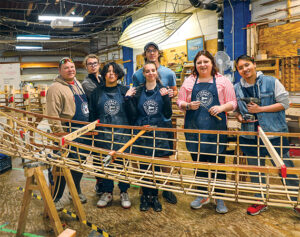To get an expert’s perspective on the challenges facing manufacturers in the Trump era of international trade, I scheduled a call with Harvard Business School Professor Willy Shih, a supply chain expert and longtime friend. We talked in late March. Then came April 2, “Liberation Day.” One week later, the administration announced a pause on all non-China tariff increases declared on Liberation Day. In May, tariff increases on Chinese imports were also delayed.
Each time I thought to call Willy for an update, another major change was announced. I started writing lists of issues to discuss, which were quickly obsolete. Willy and I did talk two more times, but before the Court of International Trade ruled the tariffs exceeded President Trump’s authority, a decision that is being appealed as this magazine heads to the printer.
As I review Willy’s comments now, I’m impressed that despite all the chaos, his insight is still timely and incredibly relevant. I urge you to read the full Q&A here.
Willy shows how today’s current trade environment is radically different from the past several decades. “People have built their supply chains and their value-adding networks assuming there aren’t those tariffs and trade barriers. Now we’re going to put those barriers in. That’s a problem,” he says.
It’s a problem because manufacturers might not be able to get the inputs they need for production, and even if they do, costs will almost certainly rise.
Willy offers a road map to survive and thrive in this new climate. He urges manufacturers to take two steps: build strong supply chain relationships, and relentlessly pursue productivity gains, particularly through automation.
Manufacturers should be working with suppliers on scenario planning to address the current tariff and trade chaos, Willy says. They can share their expected needs for the coming months and match those with anticipated incoming supplies. To fill gaps, they can shift sources out of China or out of that region. Addressing these immediate needs in cooperation with their suppliers will fortify those relationships for the long term.
Shifting sources from low-cost countries to higher-cost countries will necessarily increase expenses. To minimize the impact on cost, manufacturers must boost productivity, particularly with automation, he says.
He urges manufacturers to automate the least desirable tasks, including heavy lifting and palletizing. He also says manufacturers need to upgrade skills across their organizations, focusing on employee talent development and process innovation.
No one can predict how the Trump-era trade story will end, or how and when the next global shock will hit, but we know there will be disruptions. One thing is certain in this time of uncertainty: Manufacturers who build strong relationships with suppliers and embrace efforts to boost productivity will be best positioned to weather future turmoil.
Return to the Summer 2025 issue of Enterprise Minnesota® magazine.


